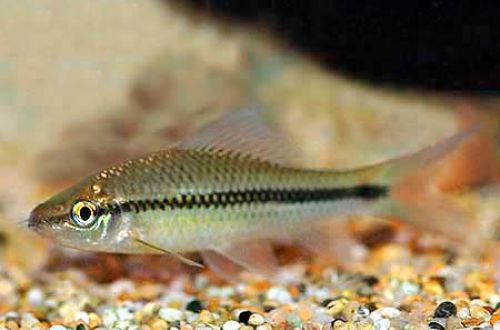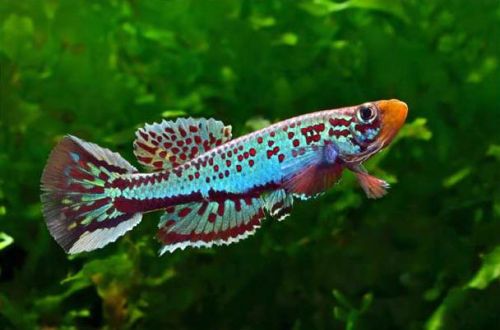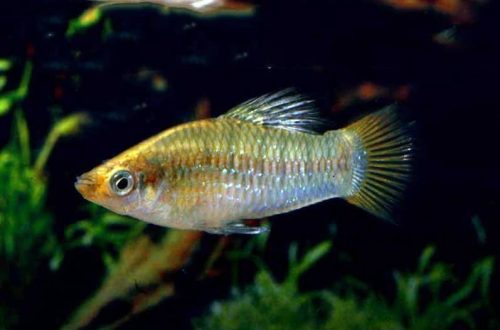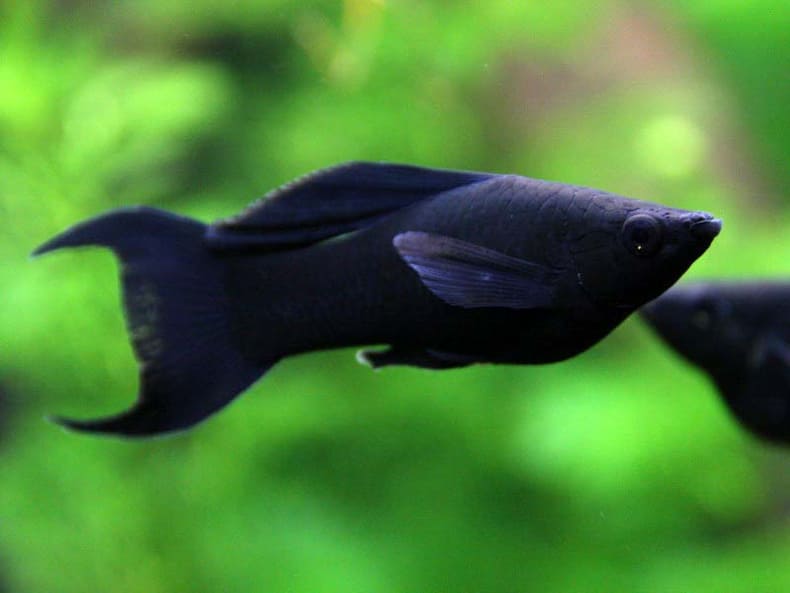
Black mollies
Black Mollies, abbreviated name Black Molly. Presumably, it is a selective color variation of Molliesia sphenops. However, a number of reputable breeders tend to consider her a descendant of Mollies Lapitina. There is no reliable information about the origin of this form, which is not of great importance for most aquarists, since it does not affect the features of the content.

For the first time in the territory of the countries of the former USSR, this fish appeared in 1948 and quickly gained popularity due to its unusual body color. Soviet breeders carried out their own hybridization work, resulting in new breeds. The most famous is a hybrid between Black Mollies and Velifera Mollies, called “Moscow”.
Brief information:
- The volume of the aquarium is from 80–100 liters.
- Temperature – 24-27°C
- Value pH — 7.0–8.5
- Water hardness – medium to high hardness (15-35 GH)
- Substrate type – any
- Lighting – any
- Brackish water – acceptable in a concentration of 10-15 gr. salt per liter of water
- Water movement is weak
- The size of the fish is 8–10 cm.
- Nutrition – any feed with herbal supplements
- Temperament – peaceful
- Content alone, in pairs or in a group
Contents
Description
Adults reach a length of 8–10 cm. Females look larger than males. Compared to other related species, this species has a modest size of fins and tail. The main distinguishing feature is the rich coal-black color of the body.
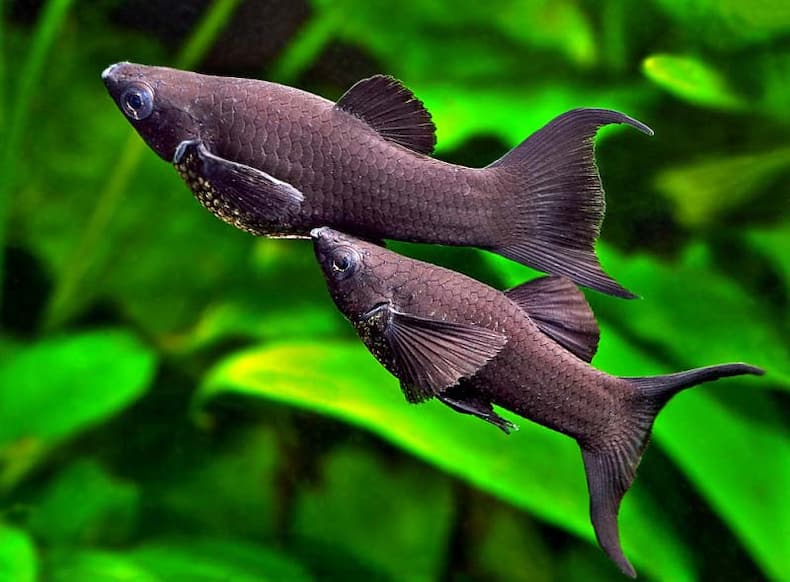
The fry can be either black or gray with dark spots. Usually, by five months, the spots increase in size and cover the entire body, but often there are places with a gray-brownish color. Breeders consider such unevenly colored offspring to be a marriage and do not put them on sale.
Food
Accepts most popular dry, frozen and live foods. Foods made specifically for Mollies from many manufacturers are a good choice. They already contain all the necessary substances, including herbal supplements – an indispensable element in the daily diet.
Maintenance and care, arrangement of the aquarium
The optimal size of the aquarium for 3-4 fish starts from 80-100 liters. In the design it is recommended to provide a large number of aquatic plants. This breeding form is very sensitive to the conditions of detention. The water temperature should be in the range of 24-27°C, the pH should be in the neutral range or higher, and the GH should be at least 15. In other conditions, the fish becomes susceptible to various diseases.

The oxygen content of the water is also important. It is worth remembering that in aquariums with dense thickets of plants, a decrease in O2 levels can occur at night. At this time, enhanced aeration is recommended to avoid hypoxia.
Maintenance of an aquarium depends on the number of inhabitants, the regularity of feeding and the equipment installed. In any case, the minimum set of care measures includes: weekly replacement of part of the water with fresh water and removal of accumulated organic waste (feed leftovers, excrement).
Many sources indicate that black Molliesia is a simple and unpretentious fish. However, such a characteristic can sound only from experienced aquarists. It is not worth purchasing for beginners, for whom other related species such as Guppies, Swordtails and Pecilia can be recommended.
Behavior and Compatibility
It has a peaceful friendly disposition. Males sometimes show excessive activity, especially during the breeding season, but with the presence of shelters, females will not experience inconvenience. Compatible with most thermophilic species capable of living in slightly alkaline environments with high GH values. For example, many viviparous fish, iris, catfish corridors, some representatives of tetras and others can become neighbors in an aquarium.
Breeding / breeding
Although the maintenance is fraught with some difficulties, but if a favorable habitat is provided, then spawning will not take long. Females reach sexual maturity by 5-7 months. Males mature by 3-4 months, but in some cases the process can take up to 6-7 months. The incubation period lasts about 30 days. The fry are born fully formed and ready to take food.
Feed special products for rearing juveniles (powders, suspensions) and/or microorganisms such as Artemia nauplii. As an alternative, it is acceptable to use regular flake food, which has been broken up into small pieces so that the fry can swallow them. Adult Mollies tend to eat their own offspring, so the entire brood should be transferred to a separate tank to keep them safe.
Fish diseases
The main cause of most diseases in the aquarium is an unsuitable habitat. As a rule, if the conditions are favorable, then there are no health problems for the fish. Accordingly, the deterioration of the external environment inevitably leads to suppression of the immune system and subsequent infection with a fungus, pathogenic bacteria and other pathogenic organisms. Read more about symptoms and treatments in the Aquarium Fish Diseases section.



